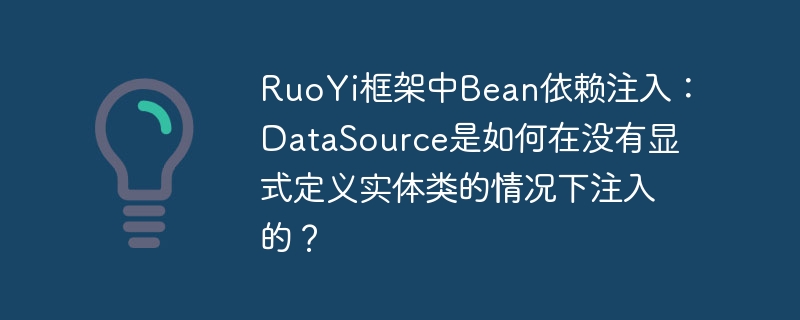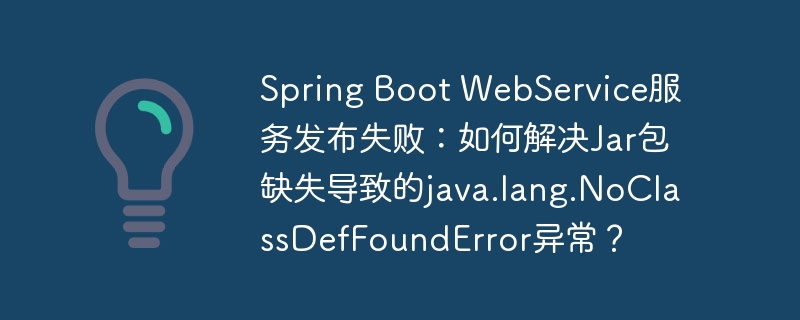
RuoYi框架巧妙的Bean依賴注入機制:DataSource無需顯式定義
RuoYi框架以其簡潔高效的代碼風格而聞名,但其Bean依賴注入的實現方式,特別是DataSource的注入,常常讓初學者困惑。本文將深入剖析RuoYi框架如何實現DataSource的依賴注入,無需顯式定義實體類。
問題:DataSource的隱式注入
在模仿RuoYi框架的com.ruoyi.framework.config.mybatisconfig時,開發者可能會遇到找不到DataSource類型的Bean的錯誤。然而,代碼中并沒有顯式的DataSource實體類定義,這正是問題的關鍵所在。
解決方案:spring的@Configuration和@Bean注解
RuoYi框架巧妙地利用了spring框架的@Configuration和@Bean注解。以DruidConfig.Java為例,關鍵代碼如下:
@Configuration public class DruidConfig { @Bean @ConfigurationProperties("spring.datasource.druid.master") public DataSource masterDataSource(DruidProperties druidProperties) { DruidDataSource dataSource = DruidDataSourceBuilder.create().build(); return druidProperties.dataSource(dataSource); } // ... (slaveDataSource方法類似) ... @Bean(name = "dynamicDataSource") @Primary public DynamicDataSource dataSource(DataSource masterDataSource) { Map<Object, Object> targetDataSources = new HashMap<>(); targetDataSources.put(DataSourceType.MASTER.name(), masterDataSource); // ... (設置slaveDataSource) ... return new DynamicDataSource(masterDataSource, targetDataSources); } }
@Configuration注解將DruidConfig類標記為Spring配置類。@Bean注解則表明masterDataSource和slaveDataSource方法會創建并返回DataSource類型的Bean。spring容器會在需要注入DataSource類型Bean時,自動調用這些方法,并將返回的Bean注入到依賴的地方。
slaveDataSource方法使用了@ConditionalOnProperty注解,只有當配置文件中spring.datasource.druid.slave.enabled屬性為true時,才會創建slaveDataSource Bean。
dataSource方法創建dynamicDataSource Bean,它依賴于masterDataSource Bean。Spring容器會先創建masterDataSource Bean,然后利用它創建dynamicDataSource Bean。
結論:Spring的自動裝配機制
RuoYi框架并非通過顯式定義DataSource實體類實現依賴注入,而是利用Spring容器的自動裝配機制,在DruidConfig類中定義Bean的創建方法,并通過@Configuration和@Bean注解實現Bean的依賴注入。 如果開發者遇到錯誤,很可能是DruidConfig類或相關配置缺失,導致Spring容器無法找到DataSource類型的Bean。 務必檢查項目配置,確保DruidConfig類正確加載并運行。



















